- what-age-is-safe-to-start-using-a-trampoline
- 1-understanding-child-development-and-safety
- 2-recommendations-from-experts-and-health-organizations
- 3-real-life-cases-what-parents-need-to-know
- 4-how-to-choose-a-trampoline-for-your-childs-age
- 5-why-older-kids-benefit-most-from-trampolines
- 6-tips-for-safe-trampoline-use-at-any-age
What Age Is Safe to Start Using a Trampoline? Expert Advice
Trampolines are a fantastic source of exercise and fun, especially for energetic kids. But parents often wonder: at what age is it truly safe for a child to begin bouncing? While trampolines can promote coordination and muscle strength, they also come with injury risks—especially when used by very young children. This article dives deep into expert recommendations, developmental readiness, and real-life considerations to help you make the right choice for your family. If you're searching for the safest and most age-appropriate trampolines, Trampoline Zone offers a curated range for every age group and backyard size.
1. Understanding Child Development and Safety
1.1 The Physical Development Factor
Children under 5 years old are still developing essential motor skills and balance. At this stage, their bones are more fragile, and their ability to judge spatial distance is limited. This combination makes them more prone to falls, sprains, and even bone fractures if they use a trampoline unsupervised or without proper gear.
1.2 Cognitive Readiness Matters Too
Young children also lack the cognitive ability to assess danger or follow safety instructions. This can lead to risky behavior, such as jumping too high or attempting stunts they’ve seen online. That’s why experts suggest that physical capability should be matched with a child’s understanding of rules and self-control.
1.3 Emotional Maturity and Peer Pressure
Even older children can get hurt due to peer pressure or overexcitement during group play. Understanding how your child handles emotional situations like taking turns and listening to supervision is also key in determining trampoline readiness.
2. Recommendations from Experts and Health Organizations
2.1 The American Academy of Pediatrics (AAP)
The AAP strongly recommends that children under 6 years old should not use full-sized trampolines. According to their findings, nearly 75% of trampoline injuries occur when multiple children are using it simultaneously—often with one child significantly younger or smaller than the others.
2.2 Pediatric Orthopedic Surgeons
Many orthopedic specialists echo these warnings, citing increased emergency room visits linked to trampoline accidents in toddlers. “The coordination just isn't there yet,” says Dr. Jonathan Yao, a pediatric orthopedic surgeon based in Chicago. “Even with safety nets and padding, the risk is high for younger kids.”
2.3 Government Safety Guidelines
Organizations like the U.S. Consumer Product Safety Commission (CPSC) provide statistics and safety guidelines indicating that adult supervision, age-appropriate equipment, and one-jumper-at-a-time rules significantly reduce injury rates.
3. Real-Life Cases: What Parents Need to Know
3.1 Emma’s Story: A Cautionary Tale
Emma, a 4-year-old from Ohio, suffered a broken arm after jumping with her older cousins on a backyard trampoline. Her mother, Rachel, recalls how quickly the accident happened: “We turned away for a second, and she landed wrong. It changed our whole summer.”
3.2 The Wilson Family Experience
On the other hand, the Wilson family from California introduced a mini indoor trampoline with safety bars for their 3-year-old under constant supervision. “He burns off energy safely every day,” says dad Mike. “We researched a lot before choosing one from Trampoline Zone.”
4. How to Choose a Trampoline for Your Child’s Age
4.1 Ages 3–5: Go Mini and Supervised
If you're considering trampolines for toddlers or preschoolers, opt for mini-trampolines with built-in handle bars, padding, and a low bounce capacity. These are often designed for indoor use and limited jumping height, which greatly reduces injury risks. Choose reputable brands like those offered at Trampoline Zone that meet all U.S. safety certifications.
4.2 Ages 6–10: Small Outdoor Models with Safety Nets
Children in this age range can transition to small outdoor trampolines but only under adult supervision and with strict safety guidelines. Look for models with reinforced safety nets, padding, and limit jumpers to one at a time.
4.3 Ages 11+: Full-Size Trampolines with Safety Upgrades
Older kids and teens can enjoy full-size trampolines, preferably with upgraded safety features like thicker padding, strong net enclosures, and even springless designs. Many models at Trampoline Zone cater specifically to families with teens who want fitness and fun in one.
5. Why Older Kids Benefit Most from Trampolines
5.1 Physical Fitness and Mental Health
For tweens and teens, trampolining becomes more than just play—it’s a workout. Jumping improves cardiovascular health, muscle tone, and coordination. There’s also growing evidence that jumping can boost mood and reduce anxiety.
5.2 Social Skills and Structured Play
Organized trampoline use (e.g., classes or games with clear rules) encourages teamwork, patience, and responsibility. These social benefits are especially valuable for middle school-aged kids navigating more complex peer relationships.
5.3 Trampoline Sports and Competitions
Trampoline parks and competitive trampoline sports are on the rise in the U.S. If your older child shows interest, getting them proper training and equipment early can be a great investment in their development and confidence.
6. Tips for Safe Trampoline Use at Any Age
6.1 Invest in Quality Equipment
Don’t compromise on safety. Always choose trampolines that meet ASTM standards. Check user weight limits, spring quality, and net enclosures. Trampoline Zone provides detailed product specs and age recommendations to make selection easier.
6.2 Set Rules and Stick to Them
Establish household trampoline rules such as “no flips,” “one person at a time,” and “always supervised.” Children are more likely to follow rules when they’re explained clearly and consistently enforced.
6.3 Regular Maintenance Checks
Inspect your trampoline monthly for wear and tear. Look for loose springs, holes in the mat, or unstable frames. Even the best trampoline can become a hazard without proper care.
6.4 Supervised Play Is Safer Play
Regardless of age, supervision reduces risk. Ensure that an adult is always present, especially when multiple kids are using the trampoline. Don’t rely on safety nets alone—they’re only effective when used alongside attentive supervision.



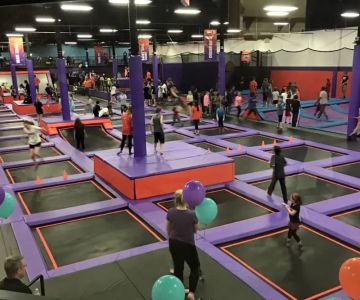
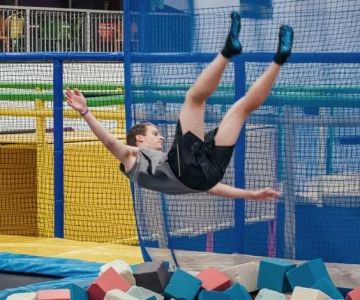
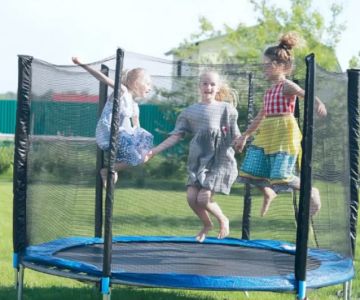

 Zap Zone4.0 (2097 reviews)
Zap Zone4.0 (2097 reviews) Twirl4.0 (15 reviews)
Twirl4.0 (15 reviews) Catapult Adventure Park NRh4.0 (127 reviews)
Catapult Adventure Park NRh4.0 (127 reviews) Sky Zone Trampoline Park4.0 (1107 reviews)
Sky Zone Trampoline Park4.0 (1107 reviews) Altitude Trampoline Park4.0 (628 reviews)
Altitude Trampoline Park4.0 (628 reviews)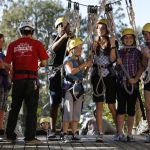 AdventurePlex4.0 (296 reviews)
AdventurePlex4.0 (296 reviews) Are Trampoline Parks Safe for Kids? Essential Guide for U.S. Parents
Are Trampoline Parks Safe for Kids? Essential Guide for U.S. Parents How Often Should You Replace Trampoline Springs? Tips for Proper Maintenance
How Often Should You Replace Trampoline Springs? Tips for Proper Maintenance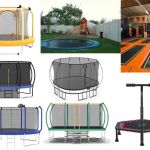 How Much Is a Trampoline? A Detailed Guide to Trampoline Costs and Buying Tips
How Much Is a Trampoline? A Detailed Guide to Trampoline Costs and Buying Tips Bounce Techniques for Stronger Legs: Effective Exercises and Tips
Bounce Techniques for Stronger Legs: Effective Exercises and Tips Essential Music Gear for Trampoline Dance: Complete Guide
Essential Music Gear for Trampoline Dance: Complete Guide Fun STEM Experiments Using Trampolines to Spark Curiosity and Learning
Fun STEM Experiments Using Trampolines to Spark Curiosity and Learning